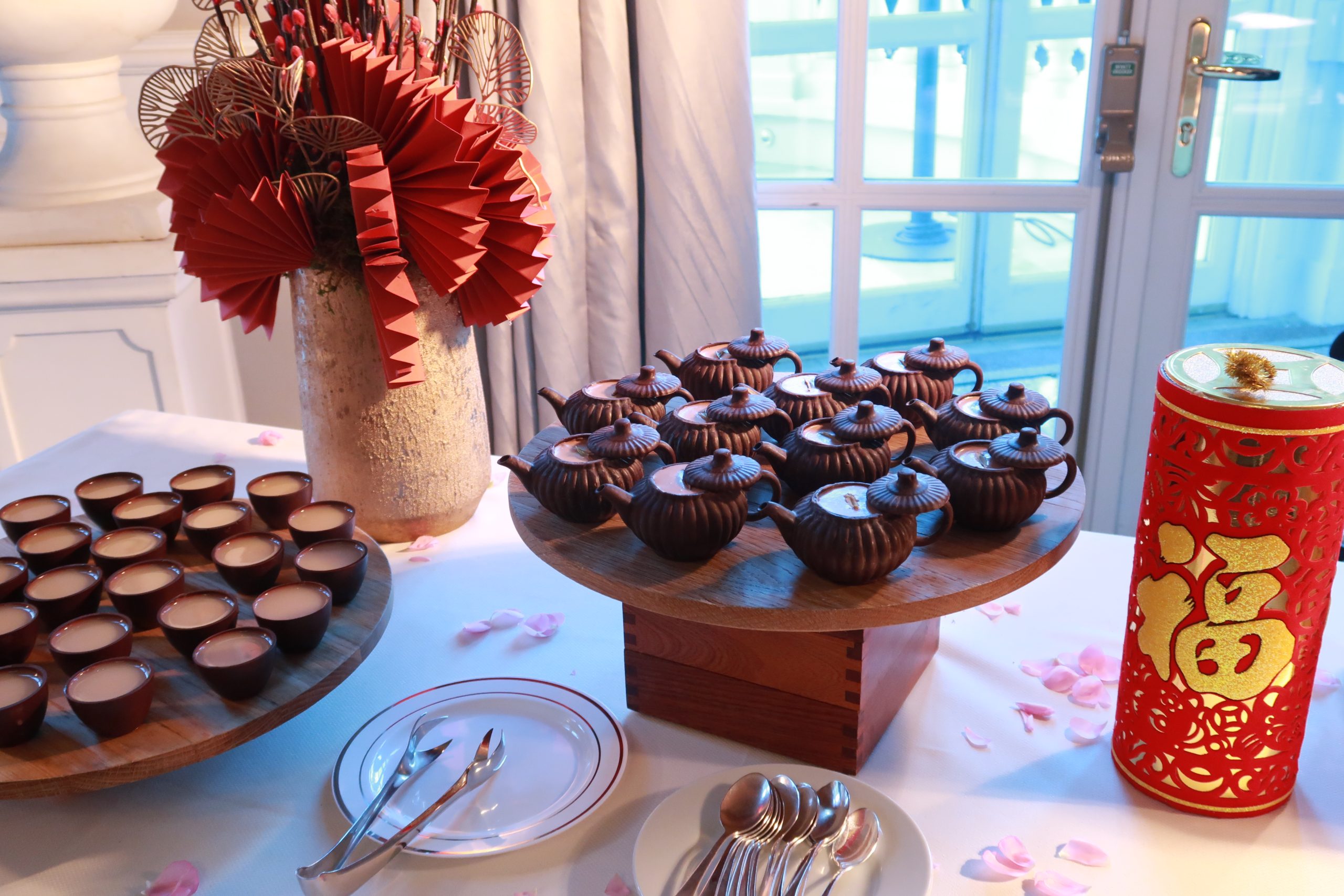On May 13th, London celebrated the opening of the tenth annual London Craft Week, this year themed “Chinese Design: Harmony in Diversity.” Known as one of the most influential cultural events in the handicraft world, the week-long gathering offers a unique platform for artisans from around the globe. It fosters a dynamic exchange of ideas, blending international and local influences with both historical and contemporary elements in a collaborative celebration of craft.

The exhibition is organized by the Art and Design Press with strong support from the London Craft Week Organizing Committee and the Cultural Section of the Chinese Embassy in the UK.
During the opening ceremony and for the very first time, the Chairman and Founder of the London Craft Week, Guy Salter, shared a letter that was received from Buckingham Palace from King Charles himself. In his message, King Charles extended heartfelt congratulations on the event’s 10th anniversary, recalling fond memories from its inauguration in 2015, which he and his wife had the honour of opening. The King lauded London Craft Week for showcasing the diverse and often hidden talents from across the globe, reflecting the vibrant energy and diversity of London. He expressed hope that the event would serve as a unifying force, bringing together artists, makers, and communities worldwide, cementing London’s status as a global hub of creativity and culture.

Guy Salter, Chairman of London Craft Week, delivered a speech at the opening ceremony. (All Photos in this article are provided by the organizers)

From left to right: Wen Longmei, Member of the Standing Committee and Head of the Propaganda Department of Ji’an County CPC Committee; Li Liyan, Minister-Counselor at the Chinese Embassy in the UK; Victoria Broackes, President of the London Design Biennale; Zhao Fei, Minister at the Chinese Embassy in the UK; Guy Salter, Chairman of London Craft Week; Xia Yuzi, Minister-Counselor at the Chinese Embassy in the UK; and Qian Zhu, President and Editor-in-Chief of Art and Design Magazine, cut the ribbon for the exhibition.
The “Chinese Design: Harmony in Diversity” exhibition, renowned for showcasing the intricate craftsmanship and cultural heritage of China, will captivate visitors with its three main sections: clothing, pottery, and lacquerware. Complementing the exhibit, three significant lectures and workshops will take place on May 14th, 15th, and 18th. These sessions will focus on ceramics, silk, and Chinese handicrafts aimed at poverty alleviation, allowing participants to engage directly with these crafts and broaden their understanding.
The apparel segment, dubbed “The Flower of Ethnic Costumes,” features the vibrant and diverse clothing of the Han, Miao, and Yi ethnic groups, brought to life by notable designers like Axin and Lei Wenwen, and the innovative apparel brand Desi Jianqu. This brand made headlines on the opening day with a fashion flash mob inspired by the national intangible cultural heritage of Xiang Yun Sha, earning enthusiastic applause from the audience.
Anthony Bednall, the Head of the Fashion Department at Kingston University, shared his decade-long experience in Beijing and his collaborative work with Chinese artisans. He emphasized the importance of preserving traditional handicrafts within the context of modern sustainable fashion. Bednall also highlighted his partnership with Chinese fashion designer, Guape, who has worked to preserve endangered embroidery skills. He noted the diversity of China’s 53 ethnic minorities and stressed the relevance of integrating cultural identity and sustainable practices into fashion education.
In pottery, “The Flower of Pottery Art” section illuminates the artistry of contemporary Longquan celadon and Jizhou kiln porcelain, contrasting folk kilns’ spontaneous creativity with the refined aesthetic of official kilns. Meanwhile, “The Flower of Lacquerware” highlights pieces like ” La(core)quer” by Huo Yijin, which blends traditional lacquer techniques with elements like celadon and historical artefacts to reinvigorate lacquerware for practical use.
The exhibition underscores the significant role of handicrafts in poverty alleviation, particularly through initiatives like the “Mother’s Needlework” project by China Ping An Group and Art and Design Magazine, which transforms recycled clothing into exquisite handicrafts while providing local women with employment and training. This not only supports local economies but also promotes the sustainability of traditional crafts.
Together, these segments and initiatives not only celebrate the aesthetic brilliance of Chinese handicrafts but also their pivotal role in cultural preservation and social advancement, highlighting the exhibition’s contribution to fostering deeper connections and sustainable development between China and the global community.










